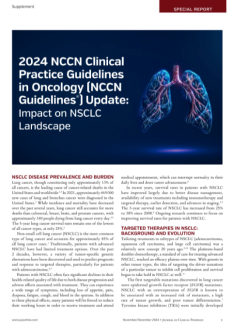The Future of Chronic Lymphocytic Leukemia Management with Targeted Therapies
Solomon Graf, MD
In this interview, an expert discusses the preclinical development and clinical impact of zanubrutinib in chronic lymphocytic leukemia, highlighting key findings from pivotal trials, comparisons with other therapies, and future research directions to optimize treatment strategies.
Please share your name, title, and a brief overview of your professional history.
 Soloman Graf, MD: My name is Solomon Graf, MD, and I am associate professor at the University of Washington School of Medicine and at the Fred Hutchinson Cancer Research Center in Seattle. I received my MD from Boston University School of Medicine and completed my residency and fellowship training at the University of Washington.
Soloman Graf, MD: My name is Solomon Graf, MD, and I am associate professor at the University of Washington School of Medicine and at the Fred Hutchinson Cancer Research Center in Seattle. I received my MD from Boston University School of Medicine and completed my residency and fellowship training at the University of Washington.
Please share a brief overview of your review concerning the preclinical discovery and development of zanubrutinib for the treatment of chronic lymphocytic leukemia (CLL).
Dr Graf: In our recent review published in Expert Opinion on Drug Discovery, my colleagues Teri Schleicher, Melanie Cohen, and I traced the design and development of zanubrutinib by BeiGene as a second-generation covalent inhibitor of the Bruton’s tyrosine kinase (BTKi) to treat CLL. We explored the market challenges posed to the third entrant in the field after ibrutinib and acalabrutinib, and BeiGene’s strategies to overcoming these, from preclinical molecule identification all the way through trial design.
What are the key takeaways from the SEQUOIA and ALPINE phase 3 studies that establish zanubrutinib's efficacy in CLL?
Dr Graf: SEQUOIA compared zanubrutinib monotherapy to the prior standard of bendamustine plus rituximab (BR) as frontline therapy in patients with CLL without the high risk molecular del17p lesion; patients with CLL with del17p were enrolled into the study’s third arm and received zanubrutinib alone. The trial demonstrated the excellent activity and tolerability of zanubrutinib and met the primary endpoint for superior progression-free survival (PFS). These data were recently updated after a median follow-up of 61.2 months, with median PFS not reached in the zanubrutinib arm and 44.1 months in the BR arm (HR 0.29; one-sided P = 0.0001).
ALPINE compared zanubrutinib to ibrutinib in patients with relapsed or refractory CLL. ALPINE employed a hierarchical design requiring demonstration of zanubrutinib noninferiority before evaluation of superiority. The data were recently updated after a median follow-up of 42.5 months: superior overall response rate (85.6% vs 75.4%), the study’s primary endpoint, as well as PFS (HR 0.68; 95% CI, 0.54-0.84) were observed for zanubrutinib. Compared to ibrutinib, zanubrutinib had substantially fewer associated cardiac events; incidence of neutropenia and hypertension were similar.
How does zanubrutinib compare to other therapies for CLL on the market, especially in terms of disease-related outcomes and toxicity profiles? How do you see zanubrutinib fitting into the current landscape of CLL management?
Dr Graf: The most commonly prescribed drugs on the market today for CLL include the 3 aforementioned covalent BTKi’s and venetoclax. The first decision thus faced by patients and their physicians is selecting an indefinitely dosed BTKi or fixed-duration venetoclax-based therapy.
After review of prior treatments and comorbidities, a BTKi may be preferred for its oral-only administration and predictable toxicities; in addition, the indefinite dosing potentially confers superior efficacy in biologically high-risk cases such as those with del17p, though this is not confirmed by randomized data. Of the BTKi’s, second-generation options have cleaner toxicity profiles, particularly as related to cardiac events; selection between zanubrutinib and acalabrutinib does so absent randomized head-to-head data and typically hinges on considerations over a broader review of specific toxicity profiles and cost.
What areas of further research and development do you personally believe are necessary to continue improving treatment options and outcomes for patients with chronic lymphocytic leukemia?
Dr Graf: We are entering an incredibly exciting time of innovation in treating CLL. Now that we have a handful of potent, targeted agents we must work on deploying them with optimal benefit-to-risk strategies, potentially through adaptively adjusting treatment intensity and/or duration to disease status and characteristics. Additionally, as we are entering the second decade of routinely using “novel” therapies in CLL we will increasingly encounter cases resistant to available drugs. Improving outcomes for these individuals will become a growing need to meet.
© 2025 HMP Global. All Rights Reserved.
Any views and opinions expressed are those of the author(s) and/or participants and do not necessarily reflect the views, policy, or position of the Journal of Clinical Pathways or HMP Global, their employees, and affiliates.

















